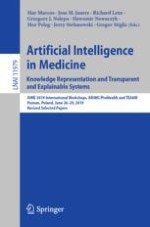2019 | Book
Artificial Intelligence in Medicine: Knowledge Representation and Transparent and Explainable Systems
AIME 2019 International Workshops, KR4HC/ProHealth and TEAAM, Poznan, Poland, June 26–29, 2019, Revised Selected Papers
Editors: Mar Marcos, Jose M. Juarez, Richard Lenz, Prof. Grzegorz J. Nalepa, Dr. Slawomir Nowaczyk, Prof. Dr. Mor Peleg, Prof. Jerzy Stefanowski, Gregor Stiglic
Publisher: Springer International Publishing
Book Series : Lecture Notes in Computer Science
